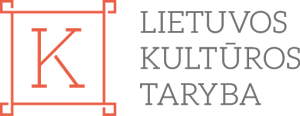#28 Where will the architect go next?
The architect goes and gathers around
Why the talk is inspiring?
As a facilitator, the architect engages and brings together people, groups, and communities. Architecture as a tool for community building. How valuable is this exchange between the architect and community? In what ways does it enrich the making and understanding of architecture?
Talks will take place at the National Art Gallery (NDG), Konstitucijos pr. 22, Vilnius. The talks will start at 8.00 p.m. and will be held in Lithuanian.
2022
Speaker
Guoda Bardauskaitė, Dorotėja Žiugždaitė, Margarita Kaučikaitė, Martynas Marozas
How the speaker is exceptional?
Speakers:
Guoda Bardauskaitė is an architect, partner of “Šilta šiaurė” studio and co-founder of the “Miško uosto” community. She is currently working on a new cultural space “Lentpjūvė”, an art residency “Trainspotting”, and together with her peers and the Švenčionys District Municipality, she is developing the vision of Švenčionėliai – a creative industries town.
Dorotėja Žiugždaitė is an architect, a master’s student at the Department of Architecture of Vilnius Academy of Arts, researching the change in city and communities: the architectural initiatives of urban communities, which aim to create a living environment that reflects the real expectations of the inhabitants. Through her work, Dorotėja tries to imagine and speculate how such initiatives, which have already become widespread in Europe and are called “self-made cities”, could look like, and be implemented in Vilnius.
Margarita Kaučikaitė is a freelance architect and has been involved in the implementation of projects promoting architectural culture since 2011 working as an organiser, project manager and executive producer.
She has been actively involved in the activities of the Architecture Foundation since 2009 – she is one of the founders of “Open House Vilnius” and “Keliaujančios architektūros dirbtuvės” and has contributed to various interdisciplinary projects such as “Šokis plius miestas”, “Rajonų veidai”, “Teatras yra ir pastatas”.
Moderator:
Martynas Marozas is an urbanist and a facilitator of urban design and development processes. He specialises in complex strategies for the transformation of the existing city, involving local businesses, communities and different interest groups. He holds a Master’s degree in Urban Planning from Delft University of Technology. From 2009 to 2013 he worked in Amsterdam and Rotterdam where he contributed or led the development of a wide range of planning, residential transformation, infrastructure and public space projects in the Netherlands and many other countries. Currently he is the head of MMAP, an urban planning company specialising in spatial planning, development projects and strategies. Martynas also teaches at Kaunas University of Technology and Vilnius University. In Vilnius, he led the Neris Embankment Renovation Project, coordinated the preparation of the General Plan of the Republic of Lithuania, as well as consulting municipalities and state institutions on territorial, infrastructure, strategic planning and sustainable development issues.
RECOMMENDS TO READ
Šaltinis
Ayn Rand
Why the book is worth reading?
(Book recommended by Guoda Bardauskaitė)
Nearly 80 years old, this fiction book explores timeless questions of value through the prism of architecture. The book may seem naive and idealistic, but what it portrays as “black” and “white” has taken on many other shades over time. This makes it a multi-layered and even more rewarding read.
RECOMMENDS TO READ
Miestas kaip įvykis: Urbanistinė kultūrinių funkcijų studija
Tomas S. Butkus
Why the book is worth reading?
(Book recommended by Dorotėja Žiugždaitė)
This is the book that guided me through the theoretical part of my master’s degree. This monograph by the architect and artist Tomas S. Butkus examines urban change against the backdrop of global transformations – late capitalism, post-industrial urbanisation, networked societies – and points out that cities are the result of a long and deliberate, though not always planned, process of human creation. The central tenet of urban reproduction is that at any given point a process occurring (or having already occurred) in the urban fabric of a city is a creative one, the value of that process is defined by the cultural, social, and economic context it is situated in, and the significance of that process is determined by the nature and scale of its eventfulness. The book highlights the importance of communities in urban development and how the significance of the community – the most important cell of society as a functioning organism – for the governance of the state and the city is not yet understood in Lithuania.
RECOMMENDS TO READ
Sibiro haiku
Jurga Vilė, Lina Itagaki
Why the book is worth reading?
(Book recommended by Margarita Kaučikaitė)
One of the most beautiful books I have read (in terms of content and execution). To me, it is an example and a source of inspiration as to how powerful things can be when artists from different disciplines come together – here both the text and the illustrations are inseparable and work together. It’s a children’s book, but it’s not childish at all – it’s a frank and simple account of the tragic history of mass deportations. My recommendation is that everyone should have it and read it, because personally, I find it empowering to learn about the difficult things, as well as to understand oneself, people, and the world.
RECOMMENDS TO READ
The Decorated Diagram
Klaus W. Herdeg
Why the book is worth reading?
(Book recommended by Martynas Marozas)
In answering the critic Clement Greenberg’s query “why all those ugly buildings?” Klaus Herdeg lays the blame directly at the feet of Walter Gropius and the curriculum at the Harvard Graduate School of Design. Herdeg contends that the work of many of America’s leading architects who studied under Gropius-Philip Johnson, I. M. Pei. John Johannsen, and Edward Barnes among them – commands visual interest through an almost total absence of design, resulting in the banal and sterile quality of so much of modern architecture. He builds his case through meticulous comparisons of dozens of buildings.






